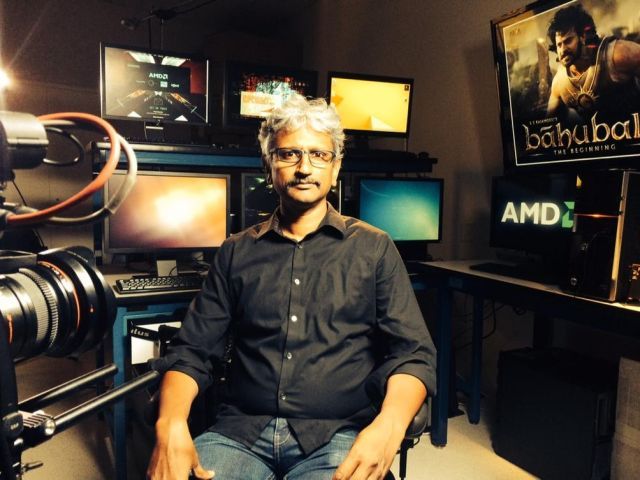
AMD is working on two versions of its upcoming Polaris graphics architecture: Polaris 10 and Polaris 11. In an interview with VentureBeat, graphics chief Raja Koduri explained that one of those GPUs is aimed at thin-and-light laptops and entry-level desktops, while the the other is a larger, high-performance GPU designed to take back the premium graphics card market currently dominated by rival Nvidia. However, the overall target for Polaris is still "console-class gaming on a thin-and-light notebook."
"We have two versions of these FinFET GPUs. Both are extremely power efficient," said Koduri. "This is Polaris 10 and that’s Polaris 11. In terms of what we’ve done at the high level, it's our most revolutionary jump in performance so far. We've redesigned many blocks in our cores. We’ve redesigned the main processor, a new geometry processor, a completely new fourth-generation Graphics Core Next with a very high increase in performance."
A seperate statement issued by AMD's Robert Hallock confirmed that Polaris will use HBM (high bandwidth memory) or GDDR5, depending on the "market segment."
When AMD took the wraps off Polaris earlier this month, it revealed it was based on a 14nm FinFET manufacturing process, which it claimed resulted in substantial performance-per-watt improvements. Interestingly, AMD only offered up a performance comparison against a mid-range GTX 950 graphics card from Nvidia, with the GDDR5-based Polaris card sucking down less wattage while running Star Wars: Battlefront at 60 FPS. That AMD chose a mid-range card for comparison suggested that perhaps the company would only launch laptop or mainstream versions of the chip in 2016. Koduri's comments confirm the company does have a high-end GPU in the works for release this year.
AMD has made substantial improvements to its graphics cards of late, with its Fury range—particularly the Fury Nano—featuring much-improved performance-per-watt. It also revamped its driver software, giving it a modern UI while also promising regular monthly updates. This helped the company secure a small bump in graphics card market share last year, although it's still some way behind rival Nvidia, which boasts 81.1 percent market share. AMD hopes that Polaris' power improvements will help claw some back.
"When we set to design this GPU, we set a completely different goal than for the usual way the PC road maps go," explained Koduri. "Those are driven by 'the benchmark score this year is X. Next year we need to target 20 percent better at this cost and this power.' We decided to do something exciting with this GPU. Let's spike it so we can accomplish something we hadn't accomplished before."
In true AMD style, the company couldn't resist taking a little dig at Nvidia and its CES presence, which focused on driverless cars.
"We believe we're several months ahead of this transition, especially for the notebook and the mainstream market," said Koduri. "The competition is talking about chips for cars and stuff, but not the mainstream market."
Aside from Polaris, Koduri also told VentureBeat about AMD's VR ambitions. According to Koduri, current VR implementations (unsurprisingly?) have image quality that is "lower quality than a simple hand mirror... [which] has much better contrast, much better pixel resolution, infinite pixel resolution."
"Our goal, the path we're on, is to get to that mirror-like quality. What the eye can see in a display today is a small fraction of what it can see in the outside world."
As for the future, Koduri said that AMD's next goal was to reach "photorealism in VR," something that's currently achieved by "rendering a frame for several hours." He also mentioned the company has grand plans for the workstation business, including CAD/CAM and VFX content creators. "We have an excellent pipeline there," he said, "especially as Polaris-based workstations come in this year. We expect to make a run at the workstation market much more aggressively, with much more compelling hardware and software than any time in the last 10 years."
reader comments
81